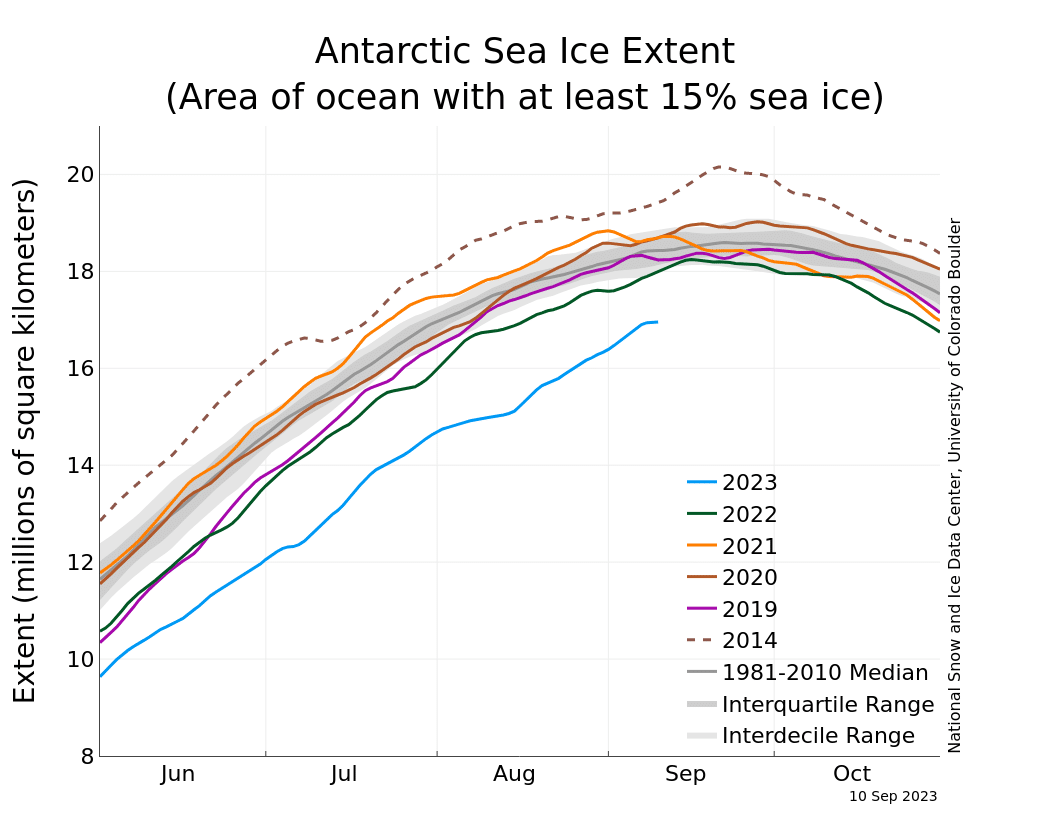Antarctic - Sea Ice Sets Record Low Maximum Extent By ‘Wide Margin’, New Analysis Shows
The new measurement, which surpasses the previous record low maximum extent of Antarctic sea ice cover set in 1986, could be the start of a “long-term trend of decline,” the National Snow and Ice Data Center in the US said.
Antarctic sea ice cover has reached its lowest maximum extent since record began in 1979, new analysis has found.
In an announcement published on Monday, the US National Snow & Ice Data Center (NSIDC) said that on September 10, Antarctic sea ice likely reached its maximum cover of 16.96 million square kilometres (6.55 million sq mi), approximately 13 days earlier than the 1981-2010 median date.
The measurement is more than one million square kilometres (approximately 398,000 sq mi) below the previous record low set in 1986 and 1.75 million square kilometres (676,000 sq mi) below the 1981-2010 average maximum extent.

“There is some concern that this may be the beginning of a long-term trend of decline for Antarctic sea ice, since oceans are warming globally, and warm water mixing in the Southern Ocean polar layer could continue,” the NSIDC’s announcement – a preliminary version that will be updated in early October – reads.
You might also like: The Consequences of Rising Sea Surface Temperatures on Wildlife and Coastal Communities
“The last three or four months now is nothing like we’ve seen before, or would have expected, ever,” Cecilia Bitz, a climate scientist specialising in sea ice at the University of Washington, told Bloomberg. “This tells me that the climate change we’re seeing is outside our range of experience and can’t be explained by natural variability.”
____________________________
Read also
Rapid glacial retreat driven by ocean temperatures
Otago Daily Times / September 26, 2023
___________________________
The NSIDC’s findings follow a multitude of concerning updates on the state of Antarctica’s ice in recent months.
In February, scientists published the results of a two-month expedition to West Antarctica’s Thwaites Glacier – nicknamed the “Doomsday Glacier” because of the catastrophic impact of its potential collapse on sea levels. They found that the glacier is melting rapidly and in unexpected ways, warning that its collapse represents more than half a metre (about 1.6 feet) of global sea level rise potential. They also did not exclude the possibility that its disappearance could destabilise neighbouring glaciers, leading to a further three-metre (9.8-foot) rise.
Antarctica Is Headed for a Climate Tipping Point
A study published in September 2022 found that exceeding 1.5C of global warming could trigger multiple climate tipping points, including Amazon dieback, thawing permafrost, and the collapse of the West Antarctic ice sheet (WAIS).
The UN’s World Meteorological Organisation (WMO) reported that temperatures in Antarctica have increased by almost 3C over the past 50 years, with glaciers experiencing an accelerated retreat. Because the Antarctic ice sheet contains 58 metres (190 feet) of sea level rise equivalent over several centuries, scientists are growing worried about its recent behaviour.

